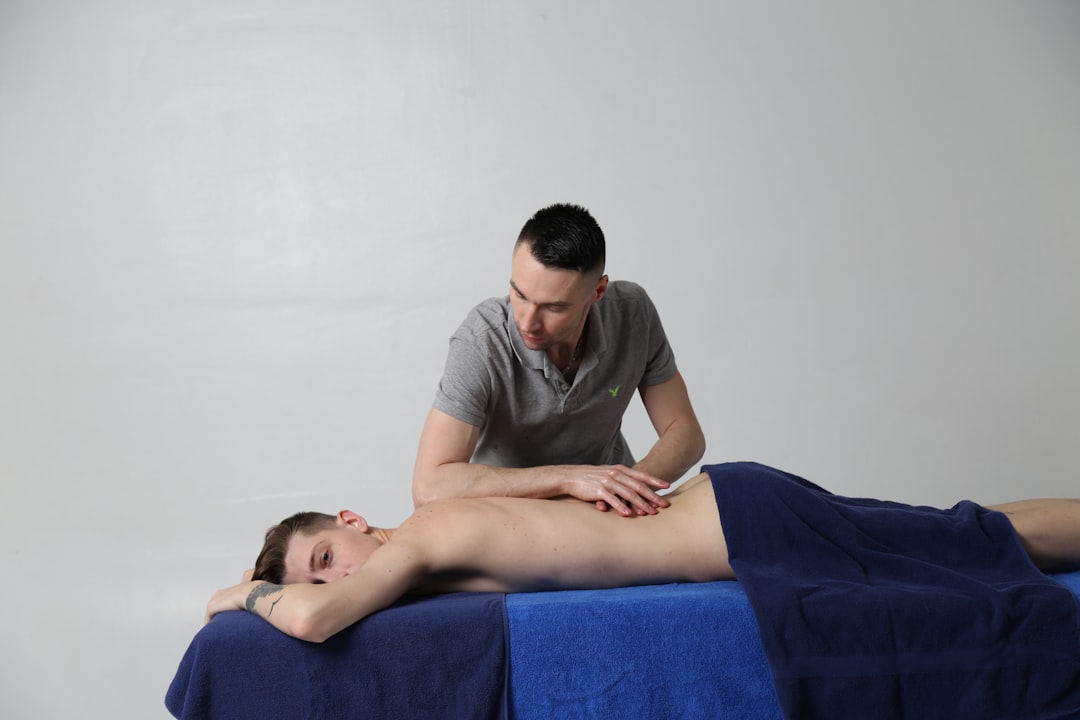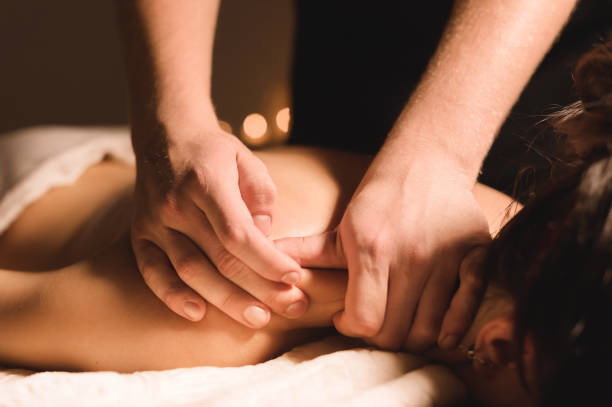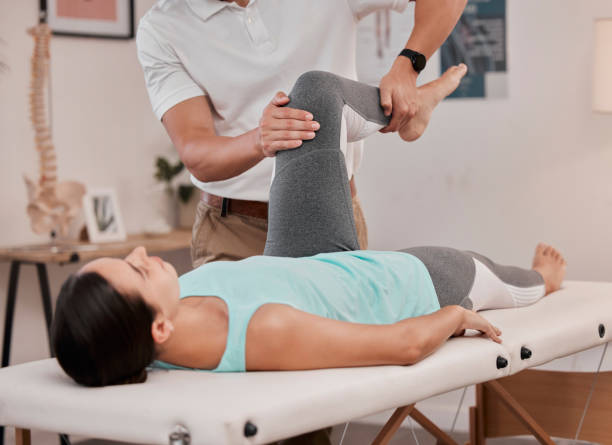An Essential Guide to Neuromuscular Massage Benefits
Why Neuromuscular Massage Is Your Solution for Chronic Pain
Neuromuscular massage is a specialized therapeutic technique that targets trigger points and muscle imbalances to relieve chronic pain, improve posture, and restore proper muscle function through sustained pressure and precise manual therapy.
Key Benefits of Neuromuscular Massage:
- Pain Relief – Reduces chronic back pain, neck tension, and headaches by 30-50%
- Improved Flexibility – Increases range of motion and muscle function
- Better Posture – Corrects muscle imbalances that cause postural problems
- Stress Reduction – Lowers cortisol levels and promotes nervous system balance
- Improved Circulation – Improves blood flow to ischemic muscle tissue
- Long-term Results – Addresses root causes rather than just symptoms
Back pain affects over 50 million Americans and causes 264 million lost workdays annually. Unlike relaxation massage, neuromuscular therapy uses clinical assessment and targeted pressure to treat the underlying neuromuscular imbalances causing your pain.
This specialized approach was developed in Europe in the 1930s and gained recognition when Dr. Janet Travell used trigger point therapy to treat President Kennedy’s back problems. The therapy works by applying sustained pressure (10-30 seconds) to specific trigger points – those tender knots in your muscles that refer pain to other areas.
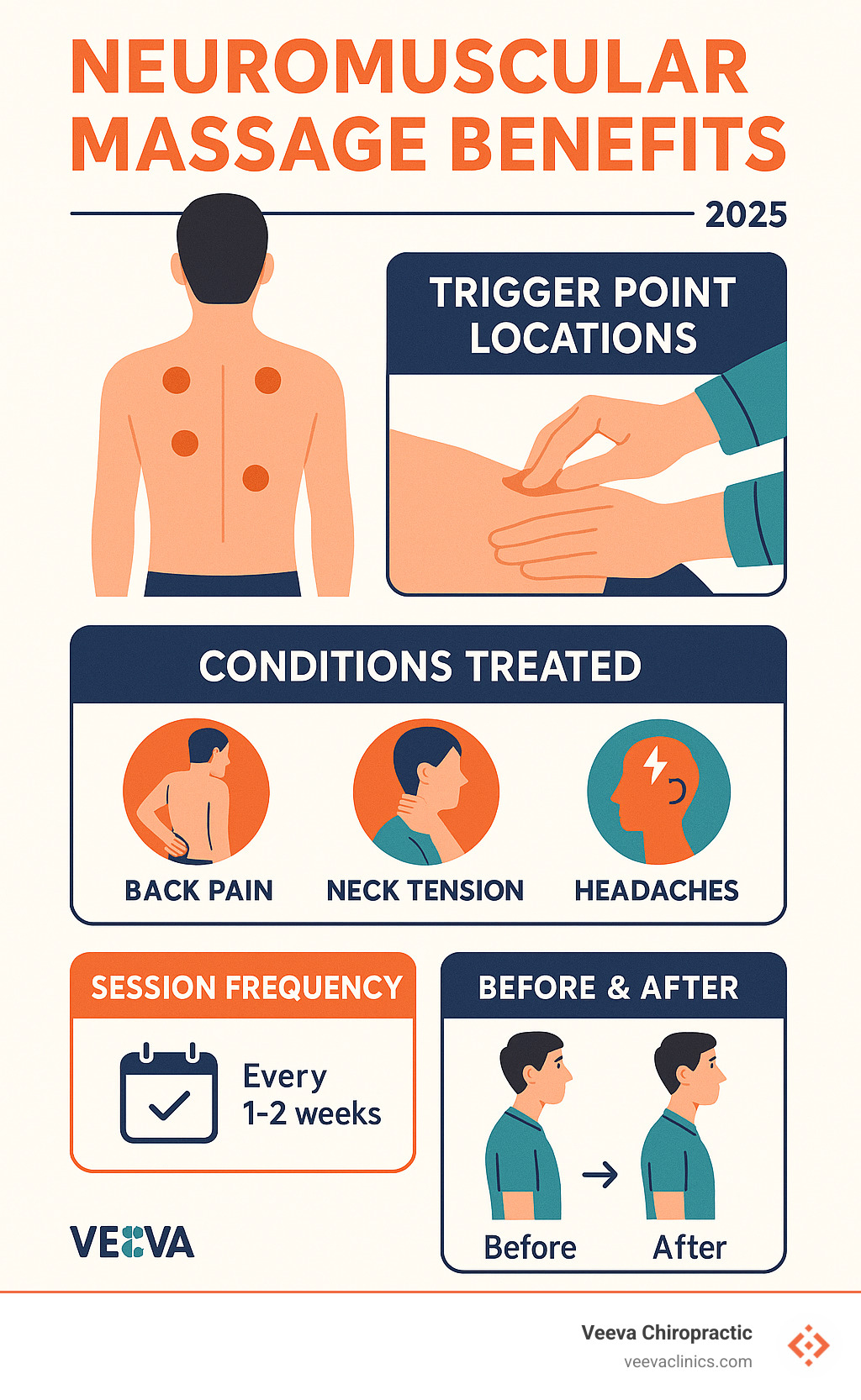
Simple neuromuscular massage glossary:
– neuromuscular massage benefits
– neuromuscular massage techniques
What Is Neuromuscular Massage Therapy?
Neuromuscular massage is detective work for your muscles. While Swedish massage works on your whole body for relaxation, neuromuscular therapy targets the exact spots causing your pain – those stubborn trigger points that make you wince when touched.
This specialized approach has fascinating roots. In the 1930s, Stanley Lief and Boris Chaitow in Europe noticed that muscle pain wasn’t just about tight muscles – it was about the conversation between your nerves and muscles getting scrambled. The therapy gained credibility when Dr. Janet Travell used trigger point work to help President Kennedy with his chronic back problems.
Neuromuscular massage addresses five key troublemakers behind persistent pain: Ischemia (muscles starved of oxygen), trigger points (hypersensitive spots that refer pain), nerve compression (tight muscles squeezing nerves), postural distortion (compensation patterns), and biomechanical dysfunction (faulty movement patterns).
Scientific research on trigger-point mechanisms shows these areas have unique biochemical signatures that make them hypersensitive to touch.
Defining Neuromuscular Massage
Neuromuscular massage is clinical therapy requiring therapists to think like medical detectives. They must understand muscle attachments, nerve pathways, and how pain travels through your body. The magic happens through sustained pressure applied to specific trigger points for 10-30 seconds until tissue releases.
This precision requires extensive training – typically 2-2.5 years developing advanced palpation skills and clinical reasoning needed to find problems through touch alone.
How It Differs From Other Massage Styles
Unlike deep tissue massage that works broad muscle groups, neuromuscular massage targets precise trigger points. The assessment process sets it apart – comprehensive evaluation of posture, movement patterns, and pain referral areas before treatment begins.
Communication during treatment is crucial. We ask you to keep discomfort below 7 out of 10 on the pain scale. Treatment frequency follows medical protocols – typically 4 treatments over 2-6 weeks rather than monthly wellness sessions.
For more detailed information about neuromuscular deep tissue massage, you can explore the specific techniques and applications.
How Neuromuscular Massage Works: Techniques & Trigger Points
Neuromuscular massage works by manually “resetting” problem areas through sustained compression. Trigger points form when muscle fibers get stuck in a contracted state, cutting off their own blood supply and creating ischemia – muscle tissue starved of oxygen and nutrients.
These trigger points follow predictable patterns mapped by researchers over decades. A trigger point in your neck might cause headaches. That knot in your hip could create sciatica-like symptoms down your leg.
Neuromuscular massage breaks the cycle by manually restoring circulation and oxygen delivery to ischemic tissues. More info about Neuromuscular Deep Tissue Massage explains these mechanisms in greater detail.
Core Techniques of Neuromuscular Massage
Sustained compression is our primary tool – continuous pressure directly to trigger points for 10-30 seconds using fingers, knuckles, or elbows. The pressure must be firm enough to compress tissue and restore blood flow, but not so intense that muscles tighten defensively.
Palpating and mapping involves carefully feeling through muscle tissue to locate exact problem spots. Positional release positions your body to shorten affected muscles, reducing neurological firing. PNF stretching combines stretching with muscle contractions to improve flexibility and strength after trigger point release.
Cross-friction massage works perpendicular to muscle fibers to break down adhesions while boosting blood flow.
Session Walk-Through
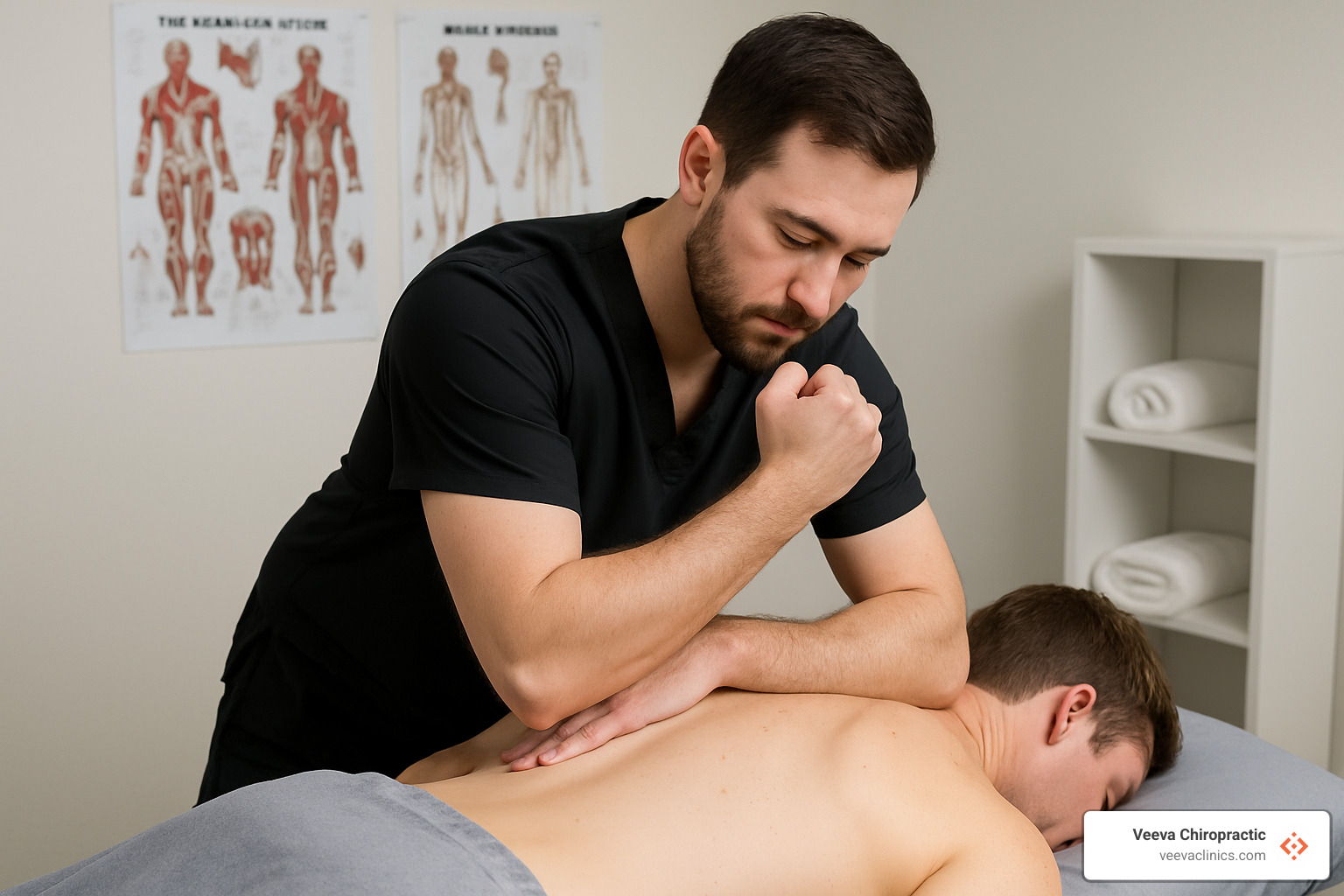
We start with comprehensive intake (10-15 minutes) covering medical history, symptoms, work habits, and lifestyle factors. Postural analysis follows – observing body alignment in different positions.
During treatment, we locate trigger points through careful palpation, then apply sustained pressure while monitoring your comfort levels through pressure-pain feedback. After releasing trigger points, we incorporate movement to retrain normal muscle patterns.
We conclude with hydration advice and aftercare instructions. Unlike spa massage where you might sleep, neuromuscular massage requires your active participation and feedback.
Conditions Treated & Benefits You Can Expect
About 50 million Americans live with chronic pain, and neuromuscular massage offers real hope for lasting relief. The American Academy of Pain Management recognizes this therapy as effective treatment for soft tissue conditions that often don’t respond to other approaches.
Low back pain and sciatica are among our most common success stories. Scientific research on acute low-back pain relief shows significant pain reduction with targeted compression to myofascial trigger points.
Headaches and migraines often originate from neck, shoulder, and jaw muscle tension. Carpal tunnel symptoms, tennis elbow, and plantar fasciitis respond beautifully – many “carpal tunnel” symptoms actually originate from forearm muscle trigger points rather than nerve compression at the wrist.
Athletes benefit from this approach for both sports injury recovery and performance improvement. Chronic conditions like fibromyalgia and TMJ disorders involve widespread trigger point patterns requiring systematic treatment.

Key Benefits of Neuromuscular Massage
Pain reduction is usually first noticed, with studies showing 30-50% improvement in chronic pain levels. Unlike medications that wear off, relief from neuromuscular massage builds over time as we address underlying muscle-nerve problems.
Posture improvement often surprises clients. When we release trigger points pulling your body out of alignment, you naturally start standing straighter. Flexibility and range of motion typically improve immediately after treatment.
Better circulation to previously ischemic muscle tissue promotes healing and reduces inflammation. Stress reduction benefits are profound – research shows massage therapy can decrease cortisol levels by up to 30% while boosting serotonin and dopamine.
Increased energy results when muscles aren’t constantly fighting trigger point tension. Most importantly, neuromuscular massage helps shift your nervous system from stressed “fight-or-flight” mode into healing “rest-and-digest” state.
Safety, Contraindications & Session Planning
Neuromuscular massage is remarkably safe when performed by trained professionals, but it’s not right for everyone. We need to modify our approach or avoid treatment for active infections or fever, acute injuries (fresh sprains within 48-72 hours), blood clotting disorders, certain medications like warfarin, pregnancy (especially first trimester), heart conditions, cancer in treatment areas, severe osteoporosis, or open wounds.
Most people experience only mild side effects. You might feel delayed-onset soreness 24-48 hours after your session – like the feeling after a good workout. Some clients feel temporarily tired as their nervous system shifts into healing mode.
Insurance coverage varies, but many plans cover neuromuscular massage when provided as part of comprehensive treatment, especially for auto accident or workplace injuries. Our team at Veeva Chiropractic works with various insurance providers.
For more details, check out More info about Massage Therapy Healing.
How Often Should You Book Neuromuscular Sessions?
For chronic pain or significant muscle dysfunction, we recommend starting with 2-4 sessions per month during initial treatment. A typical protocol involves 4 sessions spread over 2-6 weeks, giving tissues time to process changes between visits.
Once you improve, maintenance care usually shifts to monthly sessions. Several factors influence frequency: severity of conditions, stress levels, physical demands at work, posture habits, and your body’s response to treatment.
If you don’t see improvement within the first two sessions, we’ll recommend alternative treatments or refer you to other specialists. The most successful outcomes happen when neuromuscular massage becomes part of a broader wellness plan alongside other healthcare providers.
Finding a Qualified Therapist & Next Steps
Finding the right neuromuscular massage therapist requires looking for specific credentials. The most important is NCBTMB certification (National Certification Board for Therapeutic Massage & Bodywork). Many qualified practitioners have completed PNMT seminars (Precision Neuromuscular Therapy) or similar advanced training programs.
Your therapist should demonstrate strong anatomical knowledge and take a clinical approach – conducting thorough intake interviews, performing postural assessments, and maintaining detailed treatment records while tracking your progress.
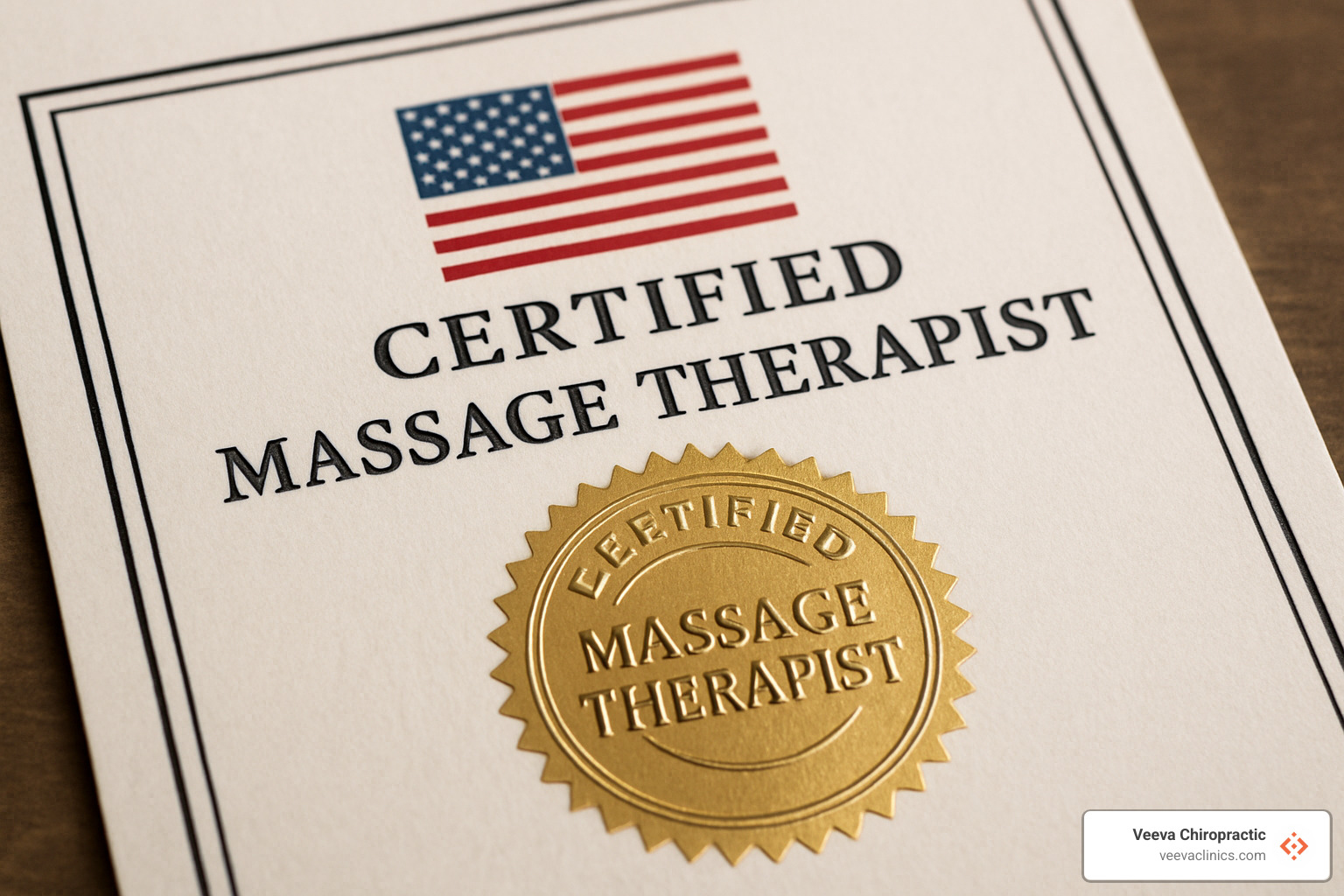
The best neuromuscular therapists work as part of a healthcare team, understanding when to refer to other professionals and how their work complements chiropractic care, physical therapy, or medical treatment.
Questions to Ask Before Booking Neuromuscular Massage
Ask about their training hours in neuromuscular techniques specifically and trigger-point experience. Inquire about their pain-scale policy – qualified therapists will ask you to communicate when pressure reaches uncomfortable levels.
Ask how they handle outcome tracking – do they take notes on progress, measure range of motion improvements, or monitor treatment effectiveness?
At Veeva Chiropractic, our massage therapists work seamlessly with our chiropractors, acupuncturists, and naturopathic doctors across our Beaverton, Happy Valley, Hillsboro, and Gresham locations. This team approach means your neuromuscular therapy is part of comprehensive treatment rather than standalone service.
For more information about our massage services, visit More info about massage services.
The key is finding someone who treats your pain condition seriously while maintaining a supportive approach to care.
Frequently Asked Questions about Neuromuscular Massage
Is neuromuscular massage painful?
Neuromuscular massage involves some discomfort since we’re working on tender trigger points causing your pain. We describe it as “therapeutic discomfort” – pressure that feels uncomfortable but somehow satisfying, like pressing on a bruise that hurts but feels oddly good.
We constantly check pressure levels, asking you to keep us informed if pressure goes above 7 out of 10 on the pain scale. This isn’t just about comfort – excessive pressure causes muscles to tighten protectively, working against our goals.
How many sessions are needed for lasting relief?
For most people with chronic pain or trigger point issues, we see best results with 4 sessions spread over 2-6 weeks. Some notice significant improvement after their first or second visit, while others with complex or long-standing issues may need more time.
Our rule: if you’re not feeling noticeably better after two sessions, we’ll discuss whether neuromuscular massage is right for you or suggest different approaches.
Once you’ve improved, many clients find monthly maintenance sessions help prevent trigger points from returning.
Is neuromuscular massage a medical treatment or a wellness service?
Neuromuscular massage falls into the medical treatment category when performed by qualified practitioners. We approach each session with clinical assessment and evidence-based techniques, conducting intake interviews, analyzing posture, and developing specific treatment plans.
Many insurance plans cover neuromuscular massage for medical conditions, especially auto accident or workplace injuries. At our Beaverton, Happy Valley, Hillsboro, and Gresham clinics, our massage therapists work with chiropractors, acupuncturists, and naturopathic doctors as part of comprehensive healthcare plans.
Conclusion
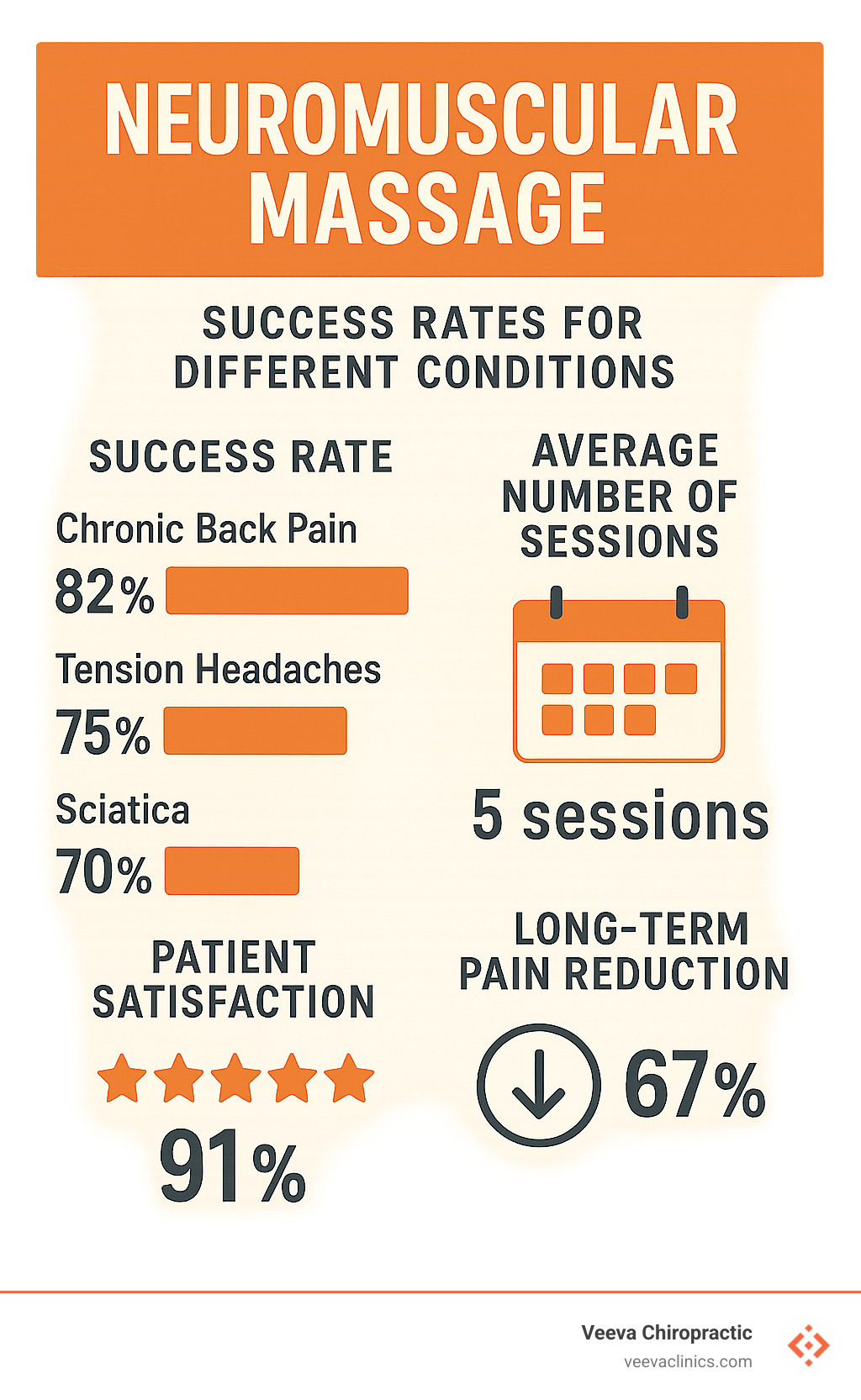
If you’ve been living with chronic pain, poor posture, or recurring muscle tension, neuromuscular massage offers real hope for lasting relief. Research shows neuromuscular therapy can reduce chronic pain by 30-50% when applied consistently, addressing root causes rather than masking symptoms.
Long-term pain management becomes achievable when you understand that tight muscle knots are trigger points that can be systematically treated. Whether dealing with back pain, tension headaches, or sports injuries, neuromuscular therapy provides a clear path forward.
Posture care extends far beyond appearance – addressing muscle imbalances now prevents future pain and mobility issues.
Start by assessing your needs honestly. Are you dealing with chronic pain unresponsive to other treatments? Have you noticed postural changes or recurring muscle tension? These are clear signs neuromuscular therapy could help.
Finding qualified care makes all the difference. At Veeva Chiropractic, our massage therapists have specialized neuromuscular training and work as part of our integrated healthcare team across Beaverton, Happy Valley, Hillsboro, and Gresham.
Commit to the process rather than expecting overnight miracles. Most people see significant improvement within 2-4 sessions, but lasting results come from following recommended treatment plans.
You don’t have to accept chronic pain as part of life. With qualified care, neuromuscular massage can be your gateway to better health, improved function, and energy to enjoy activities you love.
Ready to take the next step? More info about neuromuscular massage benefits provides additional details. Contact one of our clinic locations to schedule your consultation and start your journey toward lasting pain relief.

